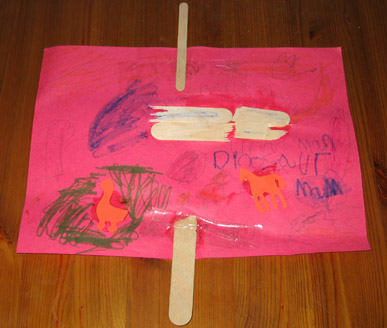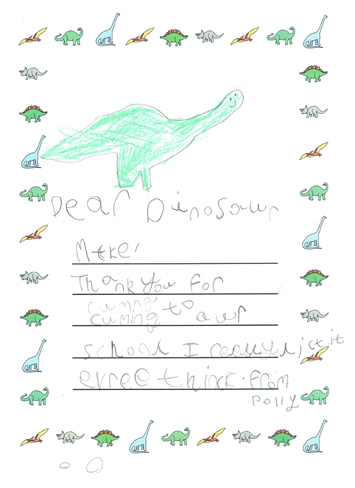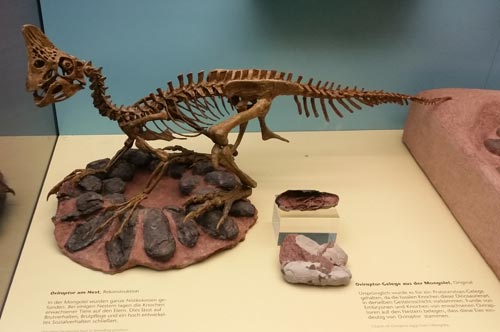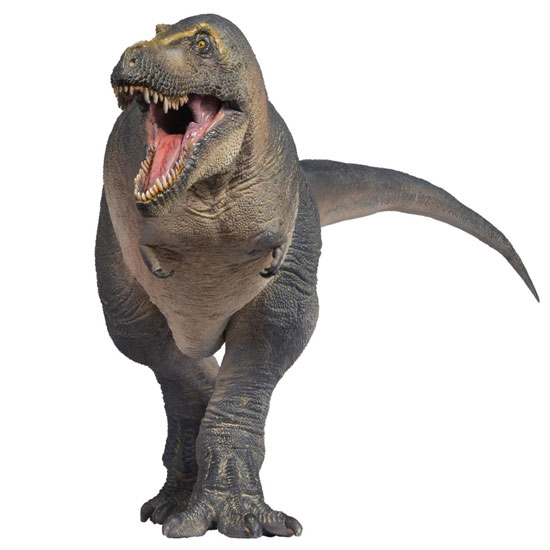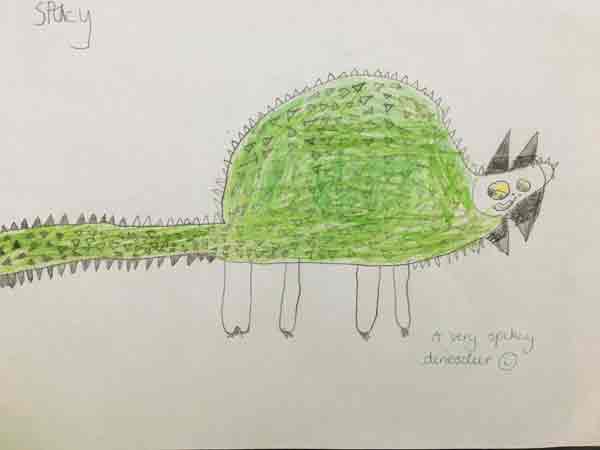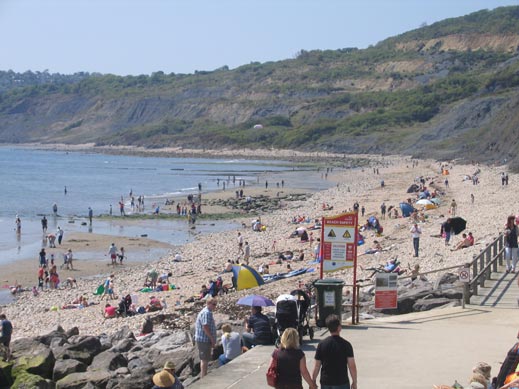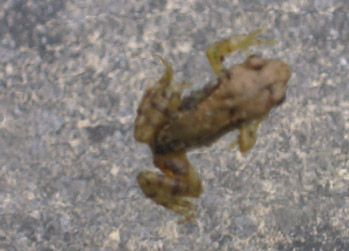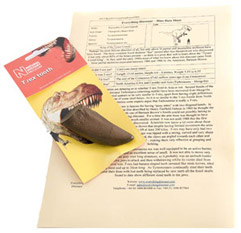New Study Indicates Dinosaur Divergence well before Late Cretaceous Demise
There is a popularist view that the dinosaurs were at their most diverse and at the peak of their evolution in terms of the number of new species evolving; at the very end of the Cretaceous. The Chicxulub impact then wiped out the great dinosaur dynasty leaving the world for the mammals to exploit. Fossil evidence does not support this idea, studies in the Hell Creek Formation (Maastrichtian faunal stage), of the western United States indicate that the number of species of dinosaur was declining in this part of the world towards the end of the Cretaceous.
Approximately ten different genera are known from the youngest Cretaceous sediments, whilst older strata from this area show evidence of many more different dinosaur types.
Certainly some of the best known dinosaurs date from the very end of the Mesozoic. Animals wandering the Hell Creek area at the end of the Cretaceous include Triceratops, Ankylosaurus and of course Tyrannosaurus rex. In the past, these gigantic representatives of their dinosaur families, (Triceratops, Ankylosaurus and T. rex are just about the largest type of dinosaur from these three families), were thought to indicate that dinosaurs just got too big and lumbering to survive and this is why they went extinct.
Scientists now know that the reasons for the end Cretaceous mass extinction event, the extinction not only of the dinosaurs but also the ammonites, plesiosaurs, mosasaurs, pterosaurs and a whole host of other plants and animals, were complex and probably involved a number of factors.
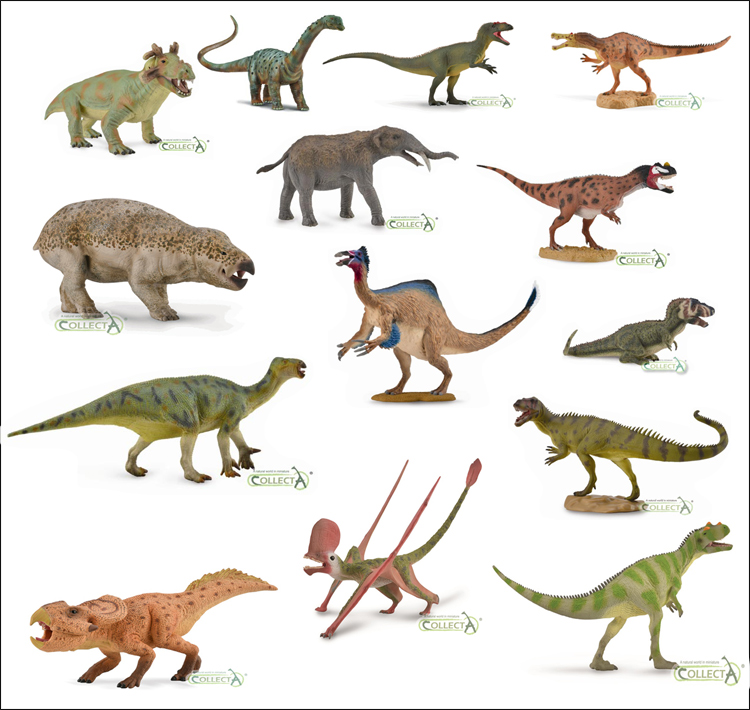
Everything Dinosaur has received a big delivery of CollectA prehistoric animal models and figures. This substantial shipment includes 35 different prehistoric animal figures. This image shows the diversity of prehistoric animals. Picture credit: Everything Dinosaur.
Picture credit: Everything Dinosaur
To view the extensive CollectA range of not to scale figures that demonstrates the diversity of prehistoric animals in the fossil record: CollectA Prehistoric Life Replicas and Figures.
Given the limitations of the existing dinosaur fossil record it is difficult to piece together a “dinosaur family tree” but a project to map dinosaur evolution and to highlight the main evolutionary shifts in Dinosauria has just been completed. The results of this study, led by a team of researchers from the University of Bristol has just been published in the British Journal Proceedings of the Royal Society B.
This study indicates that the dinosaurs as a group diversified rapidly in the Late Triassic (225 – 200 million years ago) and then underwent a second evolutionary surge in the Middle Jurassic (170 -160 million years ago). The scientists studied a large portion of the described dinosaur species and pieced together an evolutionary “family tree of dinosaurs”. The team estimate that their study covered something like 70 percent of all the known and described dinosaur species.
This new study contradicts earlier research that shows the dinosaurs diversifying during the Cretaceous. The established view is that although dinosaurs as a group diversified during their entire existence, in certain periods, the evolution of new forms was speeded up. One such period was the Early Cretaceous which saw the emergence of a greater variety of ornithischian dinosaurs – the rise of the hadrosaurs, ceratopsians and the pachycephalosaurs, for example. These types of new dinosaur were evolving during a time when many life forms on Earth were diversifying.
Dating from about 125 to 80 million years ago, there seems to have been a huge surge of increased terrestrial biodiversity. This time period is referred to as the Cretaceous Terrestrial Revolution, life on Earth over this period changed dramatically. The angiosperms (flowering plants), social insects, modern lizards, mosasaurs and many types of mammals all evolved. It had been thought that the rapidly diversifying dinosaurs were part of this move towards greater biodiversity, the paper published by the Bristol team demotes dinosaur evolution during this period to a more peripheral role. This new study indicates that by the time of the Cretaceous Terrestrial Revolution, all the main dinosaur types that were to survive until the end of the Cretaceous were already established.
This new work certainly contrasts with much of the accepted thinking regarding dinosaur diversity. Most palaeontologists believe that during the early to middle Jurassic there were only four main groups of dinosaurs, whilst during the Cretaceous this expanded to nine, namely:
megalosaurs/allosaurs, tyrannosaurs, sauropods, hysilophodontids, hadrosaurs, pachycephalosaurs, ceratopsians, ankylosaurs and stegosaurs.
The fossil record for all the terrestrial vertebrate life of the Mesozoic is very incomplete so it is difficult to trace evolutionary links between different types of animals. The work of the Bristol University team is certainly helping to open up the debate, but not having reviewed the actual paper we cannot really comment any further. It would be interesting to find out how the evolution of non-avian dinosaurs, the birds has been assessed in this study.
Very little is known about the evolution of birds, but they do seem to have diversified and developed new species very quickly during the mid to late Cretaceous, a growth in speciation that was largely unchecked by the Cretaceous mass extinction event.
Certainly, it is not surprising that the dinosaurs diversified during the Late Triassic, the world was just recovering from the Permian mass extinction (an event that saw an estimated 57% of all marine families and 70% of all terrestrial vertebrate genera becoming extinct). Life on Earth slowly began to recover and those types of organisms left began to diversify to fill those environmental niches that were empty and those soon to be left empty by the “dead clades walking” such as the last of the Lystrosaurs.
